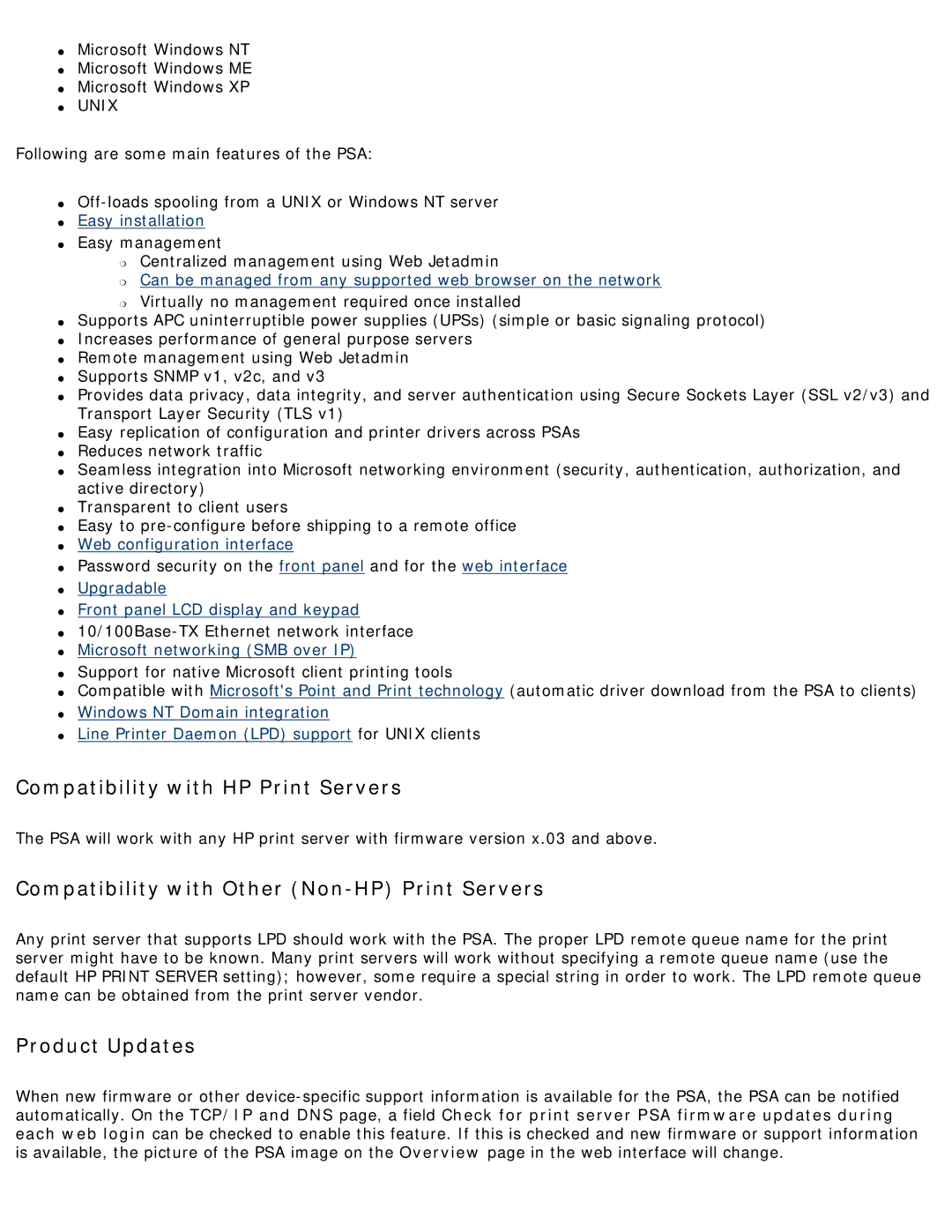●Microsoft Windows NT
●Microsoft Windows ME
●Microsoft Windows XP
●UNIX
Following are some main features of the PSA:
●
●Easy installation
●Easy management
❍Centralized management using Web Jetadmin
❍Can be managed from any supported web browser on the network
❍Virtually no management required once installed
●Supports APC uninterruptible power supplies (UPSs) (simple or basic signaling protocol)
●Increases performance of general purpose servers
●Remote management using Web Jetadmin
●Supports SNMP v1, v2c, and v3
●Provides data privacy, data integrity, and server authentication using Secure Sockets Layer (SSL v2/v3) and Transport Layer Security (TLS v1)
●Easy replication of configuration and printer drivers across PSAs
●Reduces network traffic
●Seamless integration into Microsoft networking environment (security, authentication, authorization, and active directory)
●Transparent to client users
●Easy to
●Web configuration interface
●Password security on the front panel and for the web interface
●Upgradable
●Front panel LCD display and keypad
●
●Microsoft networking (SMB over IP)
●Support for native Microsoft client printing tools
●Compatible with Microsoft's Point and Print technology (automatic driver download from the PSA to clients)
●Windows NT Domain integration
●Line Printer Daemon (LPD) support for UNIX clients
Compatibility with HP Print Servers
The PSA will work with any HP print server with firmware version x.03 and above.
Compatibility with Other (Non-HP) Print Servers
Any print server that supports LPD should work with the PSA. The proper LPD remote queue name for the print server might have to be known. Many print servers will work without specifying a remote queue name (use the default HP PRINT SERVER setting); however, some require a special string in order to work. The LPD remote queue name can be obtained from the print server vendor.
Product Updates
When new firmware or other
